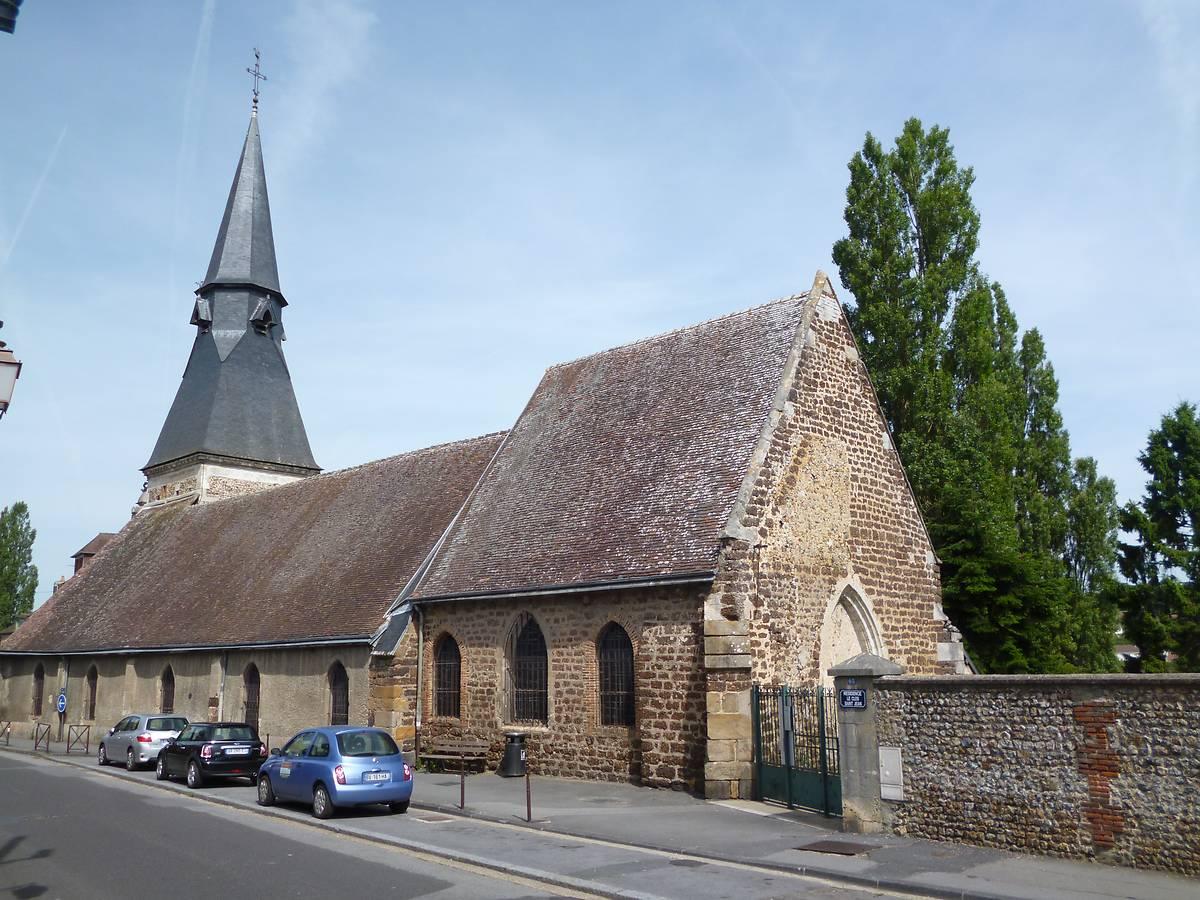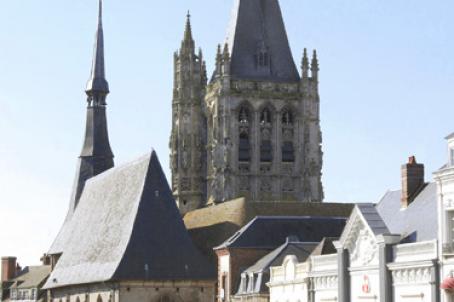Church of Saint-Jean
The church of St Jean de L'Aigle dates from the twelfth century. It has a nave of five spans, extended by a choir (late twelfth century) of three spans. In the fifteenth century, a Gothic bell tower was added, which is decorated with flamboyant Gothic statues. The church wass damaged during the bombings of 1944. Inside, you can admire the wooden altarpiece of the high altar and many classified decorative objects.
About this building
The church of St. John was, in the twelfth century, a funeral and devotional chapel located at the entrance of the cemetery of L'Aigle in Normandy. It was erected as the parish church around 1350, as part of the diocese of Seez. Built in the Romanesque style, the church has a nave with five bays in the walls of the Grison, extended by a choir (late twelfth century) of three bays with a flat chevet. In the 15th and 16th centuries, the church was enlarged: the structure of the nave (1555) was modified and a bell tower (1480) was added in flamboyant gothic style.
The tower has a square base and is surmounted by an octagonal steeple and decorated with five statues (late fifteenth century) placed under canopies that represent: a woman resting on a dragon, Saint Denis, Saint John the Baptist, a Christ to the column and a Virgin.
In the eighteenth and nineteenth centuries, the church was again remodeled and enlarged by the addition, to the north, of a side-aisle and to the west another porch. The church was damaged during the bombardment of the city by the Allies on June 7, 1944. It was restored in the 1960s and reopened to worship in 1964.
Inside you can admire the wooden altarpiece of the main altar, which houses seven paintings. The Baptism of Christ dates from 1842, the paintings of the four Evangelists, St. Cecilia and the Education of the Virgin date from the seventeenth century. There is also the baptismal font, the statue of the Virgin (1892), the stained glass windows of G. Loire (master glassmaker in Chartres) as well as the secondary altarpieces and the richly decorated tabernacle. The current building was registered as a historical monument in 1985 and many decorative elements are classified.






